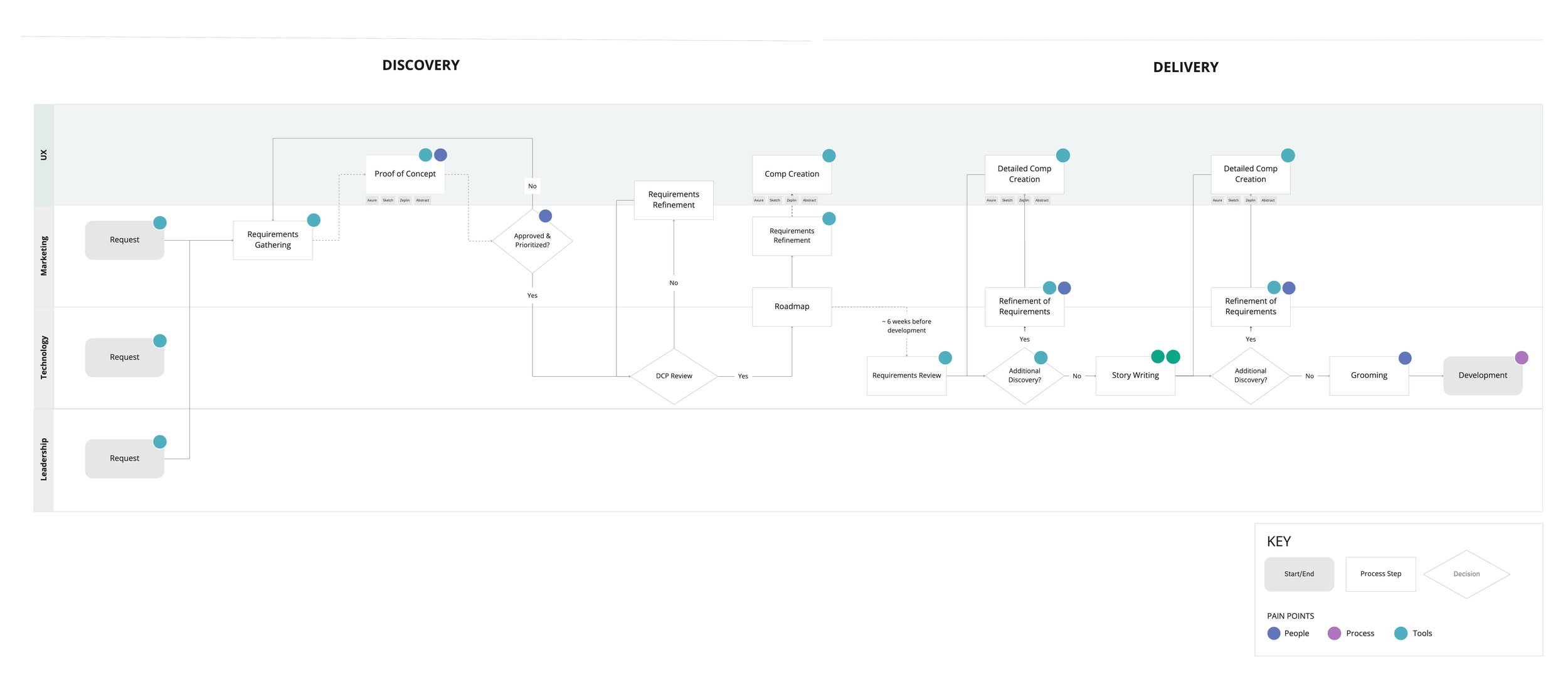Organizational Strategy
A “level up” in design.
With COVID-19 devastating the travel industry and driving the need for remote work, investment in design ops became critical. We engaged with an airlines company to rethink the strategy for maturing their design team operations to ultimately increase retention and employee satisfaction.
Overview
We created a future state operating model and roadmap to increase design maturity, increase processes efficiencies from design to development, and increase net promoter score.
Time frame
2 months
My Role
Lead UX Strategist, User Researcher, UX Designer
Activities
Within my team was a Project Director, Business Analyst and User Research Manager.
Tools
Sketch
01 Current State
Stakeholder Interviews
We conducted various cross-discipline stakeholder interviews within their digital organization to understand the day-to-day and painpoints of those working within and impacted by UX. We found the following overarching themes:
Inconsistency and inefficiency of UX resources, process, and tools
Confusion of UX role and progression
Overutilization of UX resources
“We're trying to train leadership to come to us with problems they want to solve. vs “here’s the feature we want to roll out with, on this timeline.”
— UX lead
“There was a lot of rework towards the end, because a lot of things weren't thought through at the beginning.”
— Business analyst
Process Mapping
We charted an end-end flow of how a request travels from discovery to delivery and mapped points of friction. As we uncovered during stakeholder interviews, the ways of working differed within each team, so we kept it as general as possible and conducted follow up interviews to validate our findings.
Operating Model
By the end of our currents state assessment, we had a sense of their current operating model as it relates to people, process, and tools.



Maturity Model
We leveraged a maturity model provided by Invision: The New Design Frontier, an industry-spaning report from 2019 that identifies the relationship between design practices and business performance.
This study uncovered five natural levels of design maturity, with trends showing those that operate at a higher level can see direct impacts design efforts to business outcomes.
02 Future State
How might we “level up” to an L3?





Recommendations
Prioritization
We then took our recommendations and prioritized them against level of effort and impact to the business.
What’s Next?
We compiled barriers
Lessons Learned
This project was a first of its kind within our company, and my first sole strategy project.
Current state is hard
Leadership buy-in is key
People first
Approach > Shiny Tool









